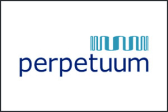|
Parkwalk Newsletter - Exit & New Investment
|
|
|||||
 |
|
||
|
|||||
|
Established in 2004 as a spin-out from the University of Southampton, Perpetuum started with the concept that mechanical vibration can be converted into electrical energy used to perpetually power autonomous, maintenance-free industrial wireless sensor nodes. Perpetuum engineered, produced and commercialized the world's first practical electromagnetic vibration harvesting micro-generator delivering the power required to transmit large amounts of autonomous wireless sensor data reliably from remotely monitored assets. This technology is now being used in the rail market for condition monitoring. The product offers rail operators clear and reliable diagnostics for safety, reliability and major cost reductions. Perpetuum’s sensors are simple to install with no batteries and no wires, condition data is sent to the cloud where Perpetuum’s algorithms read the data and provide information management systems to customers online. Essentially the Perpetuum device allows rail operators to constantly monitor the condition of the bearings in the wheels on a train. Currently this is done manually by listening for sound variations. Perpetuum’s sensors are able to predict when a fault might occur thereby allowing repairs to be made and trains to remain in service without causing delays and blockages to the service. In addition the Perpetuum sensors will help extend replacement intervals for bearings rather than replacing them after they have done a set mileage. This will confer significant cost savings to the operators. Perpetuum are seeking to extend the use of its sensors to monitor other aspects of the train including gearbox wear and tear, traction motors and suspension. Perpetuum are already in early discussions with Network Rail concerning monitoring track health. As its sensors are increasingly utilised in all carriages moving over the track they can also pick up changes in track condition which in turn will be predictive to track failure. Currently tracks are monitored by special trains or by manual inspection. The Perpertuum approach will allow a close to real time monitoring of shock and vibration in the network thus allowing the infrastructure operator to identify problems earlier as well as focus resources on the areas in the network that need attention. This will improve safety and reduce cost. Current investors include IP Group, Environmental Technologies Fund, Spark Ventures, Albion Ventures and Wyvern Fund. More detail can be found on the company's website here. The Opportunity Perpetuum have already made sales in the UK, and envisage adding additional market segments within the UK, expanding internationally and enhancing the functionality across other components. This funding round is being used to accelerate product capabilities, drive international expansion, move to larger premises and maintain market leadership. Perpetuum already generate sales and have a strong pipeline of opportunities for 2015 which includes many leading Rail Operators. The company is likely to benefit from greater activity in the awarding of new rail operator franchises as their potential cost savings are beginning to be written into some of the pitch documents. The Market The current pipeline represents a potential revenue opportunity in excess of £100m, and the global market is in excess of ten times that size. There are also multiple opportunities outside of rail networks. Management / Team David Parker, Chairman, was CEO of SPI Lasers through to its acquisition by the Trumpf Group. Prior to that he was CEO of Marconi Components Group and before then GM for Optical Components and VP of Agilent Technologies. David is an Imperial Innovations venture partner. Steve Turley, CEO, was EVP & Chief Commercial Officer of Bookham before joining Perpetuum in June 2010. Prior to that he was a VP at Nortel Networks. Roy Freeland, President, has been the Group General Manager of Bowthorpe/ Spirent plc, CEO of United Industries plc and President of Encoda EMEA. Justin Southcome, Commercial Director, joined Perpetuum after 18 years at Alstom, where he held various roles in operations, strategy and formerly as tender leader and business development of Alstom Transport. |
||
|
||||||||||||||||||||||||||||||||||||||||||
Fund |
Status |
Gross NAV |
Net NAV |
|---|---|---|---|
| UK Tech I | Fully Invested | 169.0% | 216.0% |
| UK Tech II | Fully Invested | 228.8% | 328.4% |
| UK Tech III | Fully Invested | 83.9% | 102.6% |
| UK Tech IV | Fully Invested | 102.5% | 134.5% |
| UK Tech V | Investing | - | - |
| University of Cambridge Enterprise I | Fully Invested | 145.1% | 186.1% |
| University of Cambridge Enterprise II | Investing | - | - |
| University of Oxford Isis I | Investing | - | - |
| Parkwalk Opportunities | Evergreen | n/a | n/a |
Valuations as of 7th October 2014. Net NAV includes income tax relief and fees on investment
Parkwalk’s current portfolio consists of over 30 companies, which have raised in excess of £250m of funding between them since 2010 and over 600 patents protect their technology and processes.
Overall, Funds I-IV’s portfolio comprises of 9% Series ‘A’, 33% Series ‘B’, 25% Pre-IPO and 33% AIM listed.
Past performance is no guide to future performance. The price of a fund can fall as well as rise. Investors may receive back less than originally invested.
|
|||||
